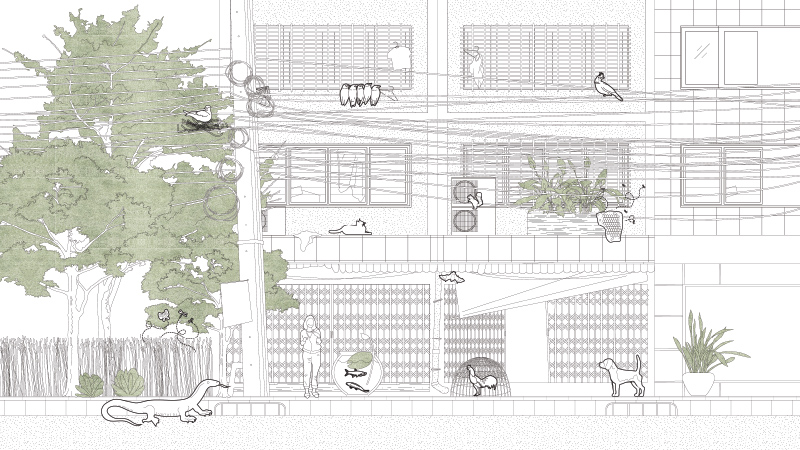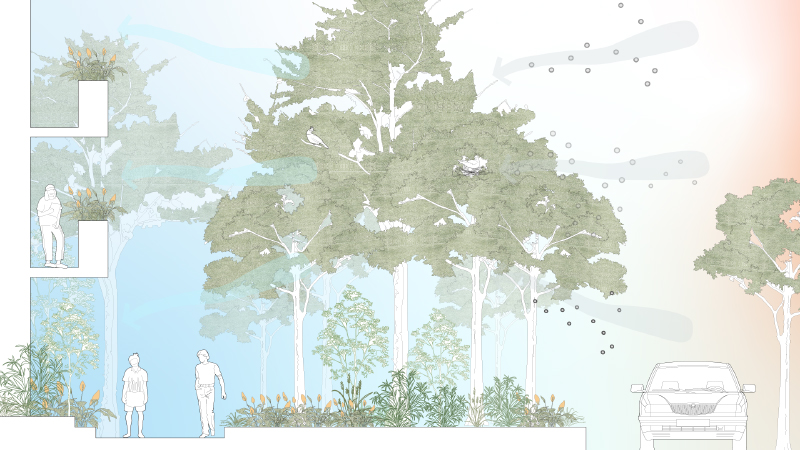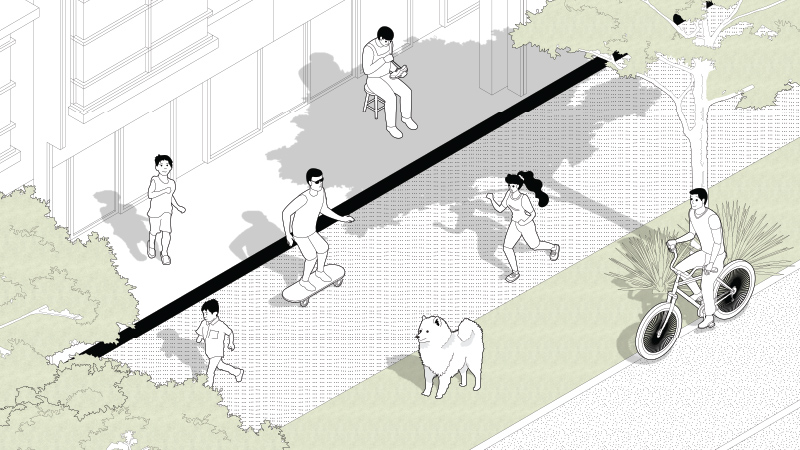
Community Reorganization During the Pandemic
Community Quarantine

The preparation of a public quarantined space is recommended to be an existing public building in the community such as schools and gymnasiums. The building has to have good airflow and temperature along with being clean and dry. The consideration of a decent living quality during their stay will allow patients to trust and assure them of life security. Furthermore, the sleeping area, shower area, authoritative officer contact area, and necessity supplies drop-off area must be sectioned.
The service area splits into 3 main spaces; a waiting area for patients to stay before being sent off to hospitals and field hospitals, a quarantine area for patients with a high risk of infection, and lastly, a recovery area for infected patients who had just got back from the hospital, this area will be placed outside of the community. In addition to all stated services, the Thai Care application has also been developed as an information center for patients providing easier access to precautionary knowledge and directions to actions that can be taken.
Repurposing Wat Khlong Toei

Wat Khlong Toei is one of the examples of repurposing an existing public building into a quarantine space. Wat Khlong Toei has more than 500 patients in and out daily. A total of 50 beds are provided on the 8th floor of the building as a waiting area for temporary patients who will need to be sent off to hospitals. Authoritative officers and caretakers area is placed on a different floor where surveillance cameras are monitored. Indoor routes are split into 2 paths; security officers who have no contact with patients and caretakers who bring patients’ food and medicine.
In addition to the provided facilities, the monks in the temple are given the responsibility to take care of these patients, they’re split into 3 teams. First, the team that takes in patients pre-record, secondly, habitation care, and lastly, patient care. Patient care is mainly done online, using a security camera and LINE group to communicate, this LINE group allows patients to notify all officers of any abnormal symptoms.
Route and Transportation

Though it is obvious that facilities and patient care are important, the transportation route of resources is one of the biggest factors as well. Research of an architecture student at the McGill University, Canada has recommended a 1 direction route system that gives the crowded community easier access. Three typologies of the path have been directed for each purpose. Firstly, small alleys will be used by people in the infected community since there is no need for them to leave the community. Secondly, the route that goes around the infected community will be used by the nearby community that needs to visit another area. This route may cause longer transportation time but they must aim to use the same route every time. Lastly, the route for those who need to go through the infected community to get to their destination, this path aims to be as far from the central area of infection as possible.
Understandably, this theory may be less practical in reality due to the existing urban usage of space in the community and multiple external factors. Therefore, to cause the least disturbance within the neighborhood, this theory will take longer planning time and on-site survey.
Reference:






